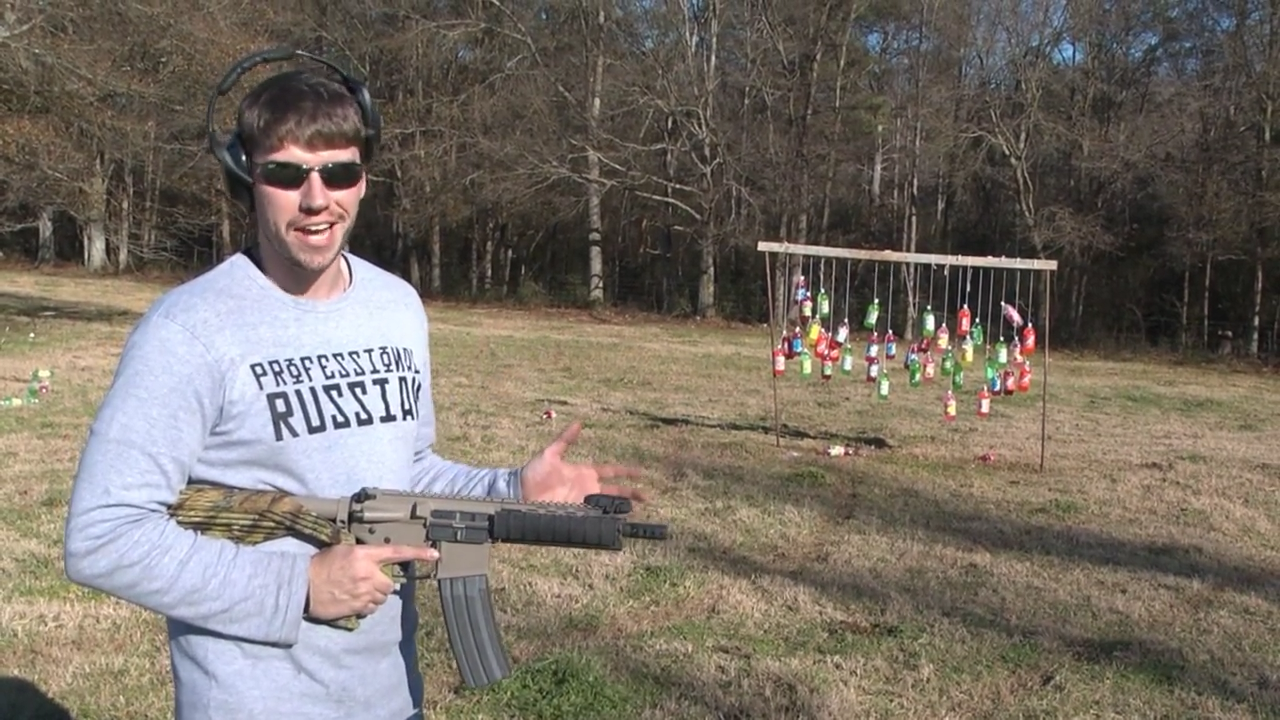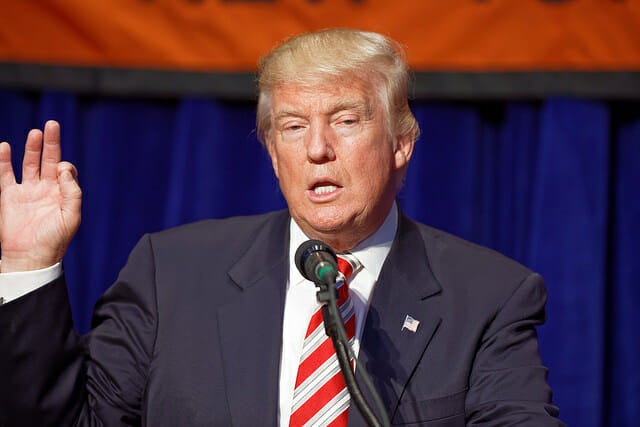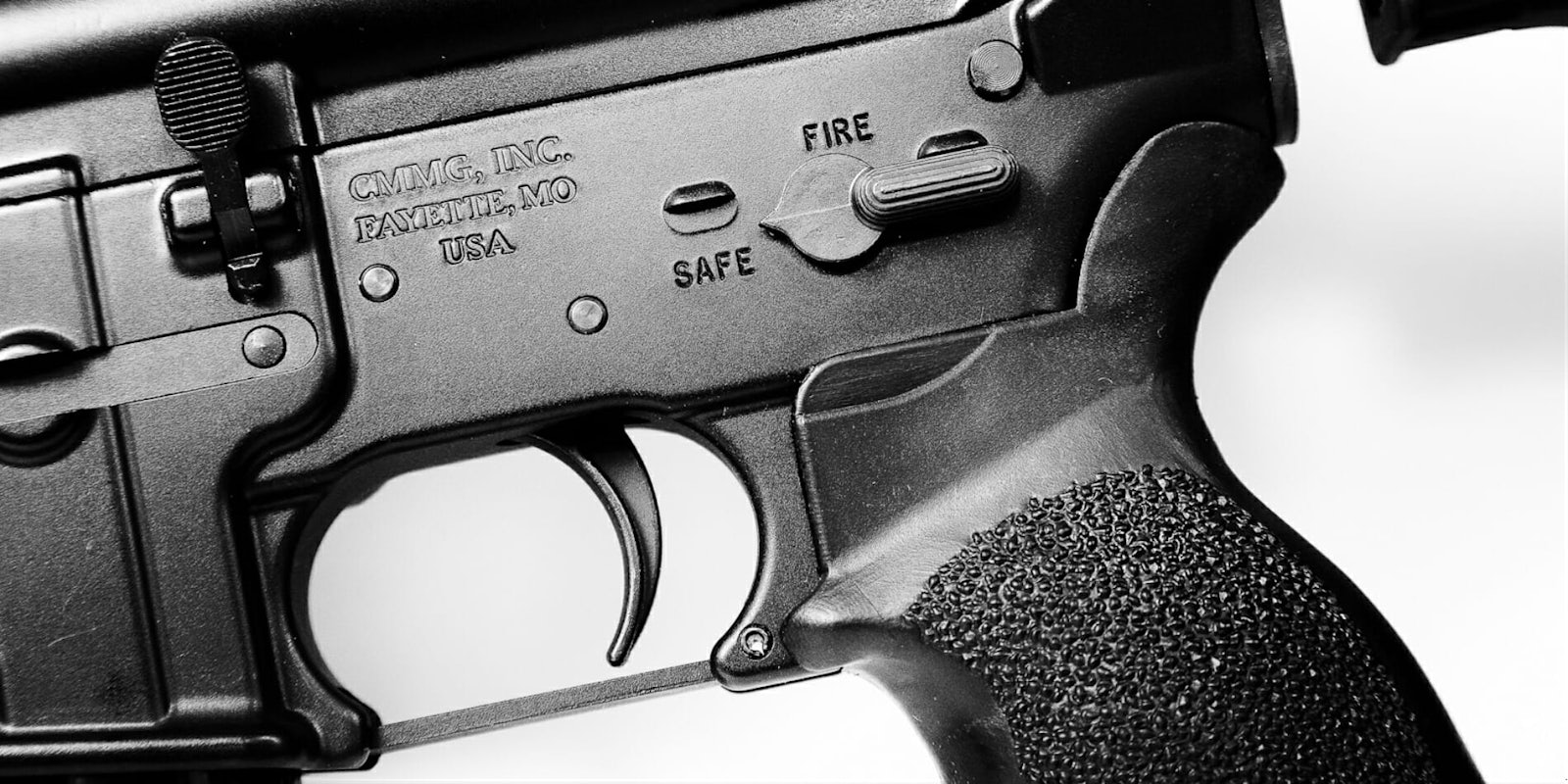On Tuesday, President Donald Trump announced that he wants to work with Attorney General Jeff Sessions to ban bump stocks across the country, preventing gun owners from turning their firearms into deadly machine gun-like weapons. But what is a bump stock?
Trump’s memo requesting the change follows ongoing pressure in the wake of the Parkland high school shooting that took 17 lives. But while gun control discussions are second-nature to most Americans, few understand how bump stocks work, why they’re so dangerous, and what Trump’s ban on them would mean. Here’s what you need to know.
What is a bump stock?

Bump stocks reference the term “bump fire,” in which a firearm’s recoil is used on a semi-automatic weapon to bump the trigger against the user’s finger. This fires repeated shots that simulate a fully automatic gun’s firing. In other words, bump fire turns a rifle or pistol that fires a single round at a time into a weapon that shoots one bullet after another in repeated succession.
Bump stocks, also known as “bump fire stocks,” can be attached to a semi-automatic weapon and can cost anywhere from $50 to several hundred dollars, making them much cheaper to obtain than fully automatic weapons, like an AK-47.
One video from YouTube Channel FPSRussia demonstrates a semi-automatic civilian assault rifle firing at 900 rounds per minute into a pond and at soda bottles, showing how the stock makes the gunfire quickly and efficiently. All it takes is “a little practice” before users can control the recoil and properly fire.
Bump stocks themselves have repeatedly come up during gun control discussions for quite some time, with reports as early as 2013 discussing their sheer power as legally available devices. But it wasn’t until the Oct. 2017 Las Vegas shooting that the American media began seriously discussing bump stocks; gunman Stephen Paddock was found with 12 stocks, giving him the ability to fire one round after another from his hotel room. Activists have since called for a bump stock ban, arguing that the attachments turn legal firearms into deadly guns akin to fully automatic military assault rifles.
Is Trump moving away from the NRA?

Regulating bump stocks sounds like a major shift from President Trump’s previous moves against gun control regulations. But Trump may have little power to ban the stocks. The Obama administration’s Bureau of Alcohol, Tobacco, Firearms and Explosives concluded that a bump stock ban would require an act from Congress, and the bureau stuck to that position after the Las Vegas shooting, according to the New York Times.
Whether Trump is aware of this or not is unclear, but it certainly means the president’s move is, at best, a useless one.
It’s not like he straying too far from the NRA’s beliefs on bump stocks, either. After the Las Vegas shooting, the National Rifle Association called on the Bureau of Alcohol, Tobacco, Firearms, and Explosives to review whether bump stocks comply with federal regulations, as the NRA believes “devices designed to allow semi-automatic rifles to function like fully-automatic rifles should be subject to additional regulations.” In fact, the organization went so far as to imply President Barack Obama is at fault for bump stocks, pointing out that his administration “approved the sale of bump fire stocks” on two separate occasions.
The NRA didn’t necessarily call for a ban on bump stocks. Still, at the very least, Trump isn’t contradicting the organization’s wishes. And he won’t want to anytime soon, as the NRA’s enormous fundraising warchest played a major role in the 2016 elections. That year, the NRA put down $54 million between the presidential and congressional election cycle, with $11 million supporting President Trump and $20 million targeting candidate Hillary Clinton, ABC reports. With the 2020 election just two years away, Trump will likely want the NRA by his side if he wants to be re-elected.
Trump may have a particularly nefarious relationship with the NRA, too, as the organization may be involved in the Russia investigation. The FBI is looking into whether the NRA worked with a banker connected to the Russian government in order to funnel money from Putin’s administration, through the NRA, and into the Trump campaign. CNBC calls the claim “akin to money laundering,” and if it ends up being true, then Trump isn’t necessarily going to end his relationship with the NRA in the near future.
Regulating and banning bump stocks would go a long way to prevent mass shootings that involve automatic-like guns. But the president either doesn’t understand that his administration cannot regulate the attachments, or he doesn’t care. And if the NRA is serious about some form of gun control, then the association will have to turn to Congress, not the president, to enact better measures.


